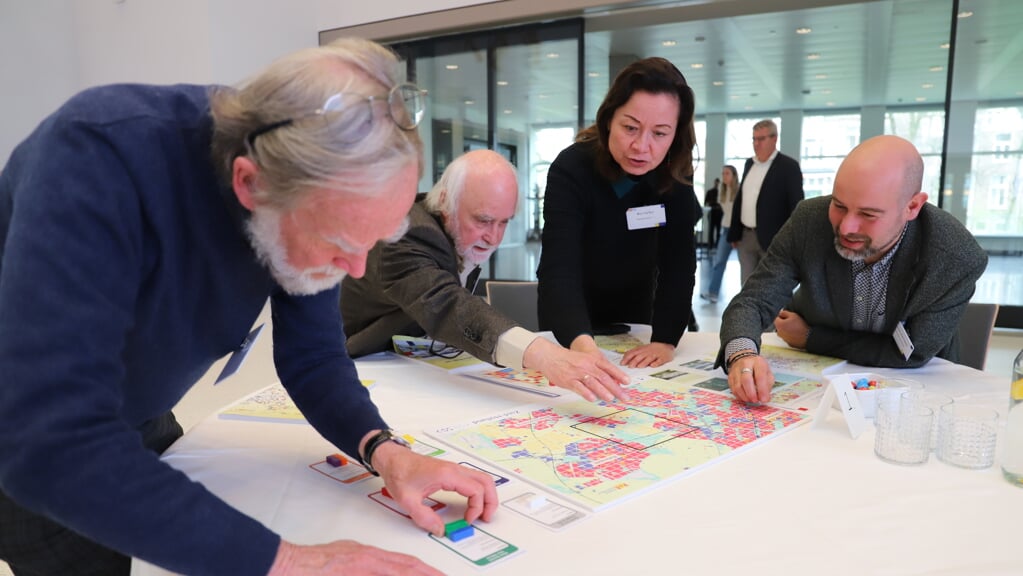general
Read 231 times
The Hague – We must play the space game differently than we have for the past 50 years. That was the message of the “space-bending” event held last week at the regional government building in The Hague.
Written by Eric van Leeuwen
Where can additional homes be built, where is there space for energy, is there still a nature and recreation gap, and where can we “cut back” on greenhouse horticulture? In the second part of the programme, participants in the knowledge event for the province of South Holland were allowed to think about South Holland in the future, in a spatial sense.
Inspiration, creativity, innovation and flexibility were necessary to find space for twenty blocks (each block representing an aspiration) on the game board and leave sixteen behind. It's the same way in “real life”. Given all the ambitions and tasks out there and the limited space in which to do everything, policymakers in water boards, municipalities and other agencies have to look at spatial planning differently.
“It is very important that there remains sufficient open space for living, working and leisure in this densely populated and most densely populated province. Spatial planning is critical,” said MP Anne Koning, who reported last week that plans had been approved to build 260,000 new homes through 2034. indispensable.
“There are no choices without consequences,” Koning said of dividing space. “Suppose you turn all the industrial areas into residential areas, where should people work? The tendency is to say you want to do both: Can't you build two floors of houses on top of those malls? To be honest, we have to say that we can get there with either or neither, and that sometimes we have to make an either-or-neither choice. However, if both are possible, we try to shape it. “It's going to take a lot of creativity to do that.”
The MP also said: “It is an important step towards better protecting the open landscape and the agricultural area within it.” If we continue on the path of the past 50 years, we will have little open space left. The biggest challenge is to realize together that things have to be different.
Paul Gerritsen, president of the DeltaMetropolis Association, painted a picture of spatial planning from 1970 to 2020. There was a lot of construction going on, and there was a lot of space. From business parks to homes. And also for
activity, and the red carpet was rolled out. What is striking: the number of newly built houses was almost equal to the growth in the population of South Holland (about 750 thousand people). However, spatial demands also mean that the South Netherlands is now forced to consider a different spatial arrangement.
During the event, we also zoomed in on the Pijnacker-Nootdorp, Lansingerland, Zoetermeer, Nieuwerkerk aan den IJssel and Waddinxveen circuit. Whoever placed the map of 2020 on the map of 1970 saw a tremendous development in buildings. In 1970, the population of New Yorkerke was only ten thousand people, but now that number is two and a half times. Waddinxveen had 16,000 in 1970, and at the beginning of this year the farmer had 33,500.

“Total coffee specialist. Hardcore reader. Incurable music scholar. Web guru. Freelance troublemaker. Problem solver. Travel trailblazer.”







More Stories
GALA lacks a chapter on e-health
Weird beer can taste really good.
Planets contain much more water than previously thought